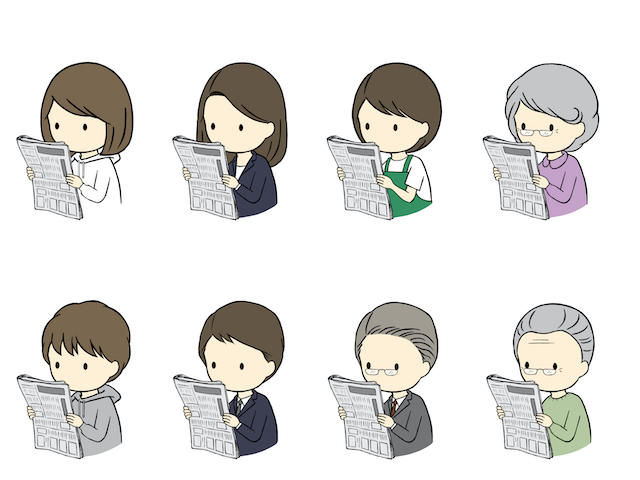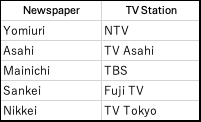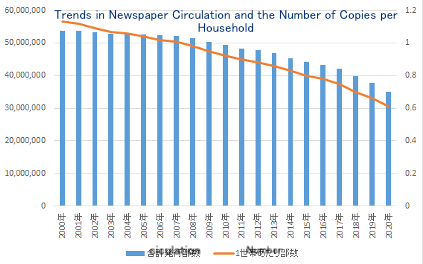Newspaper Circulation in Japan
At one time, around 60 million copies of newspapers were issued daily in Japan. Of these, the five major national newspapers—Yomiuri, Asahi, Mainichi, Sankei, and Nikkei—accounted for about 25 million copies. National newspapers are those that can be subscribed to anywhere in Japan. Notably, newspapers are delivered to homes both in the morning and evening. While newspapers can also be purchased at train stations and convenience stores, home delivery remains the common practice.


Local and Block Newspapers
In addition to the national papers, there are local newspapers published for each prefecture and block papers that cover multiple prefectures. While national newspapers can dispatch correspondents globally to gather information, local papers cannot do this. Instead, they rely on buying articles from paperless news agencies like Kyodo News and Jiji Press. However, local newspapers excel at providing in-depth coverage of regional topics through their own reporting.
Limited Differences in National Newspapers
While local newspapers may have distinctive qualities, it is difficult to find significant differences in the editorial stance of national newspapers. Although reading the editorials reveals traditional liberal or conservative perspectives, the differences are subtle. This is partly due to the close relationship between the national newspapers and television networks. All key TV stations in Tokyo are affiliated with a national newspaper, and commercial broadcasters rely on advertising revenue from corporate sponsors. As a result, extreme opinions are rarely aired. Since TV news reporting depends on the newspaper’s information network, newspapers are also unlikely to provide extreme opinions to be broadcast, leading to moderate content across the board.


Newspaper Subscriptions Declining in Households
When I was a high school social studies teacher, many households subscribed to one of the national newspapers. I often assigned students homework that involved cutting out newspaper articles, pasting them into notebooks, and writing comments. However, around the year 2000, this became difficult as more households stopped subscribing to newspapers. The spread of the internet led people to turn to online sources for information, making newspapers seem unnecessary. The foundation for assigning such homework began to fade. The decline in newspaper circulation and household subscriptions continues unabated to this day.


The Decline in Reading Books
On September 17, the Agency for Cultural Affairs announced the results of a public opinion survey showing that over 60% of people do not read even one book per month. This, too, can be attributed to the availability of information online. While it is possible to get information from smartphones without reading books or newspapers, reading offers more than just information. It fosters the ability to think logically and comprehensively. Developing this skill helps create a form of immunity to the dubious information circulating on the internet.


A Reflection on the Future of Newspapers
On sleepless nights around 3 a.m., I sometimes hear the sound of motorcycles delivering newspapers. I think to myself that these newspaper delivery people may be the ones supporting Japan’s knowledge. However, given the ever-decreasing number of newspaper subscriptions and the dwindling reading habits in general, I cannot help but feel concerned about this trend.

